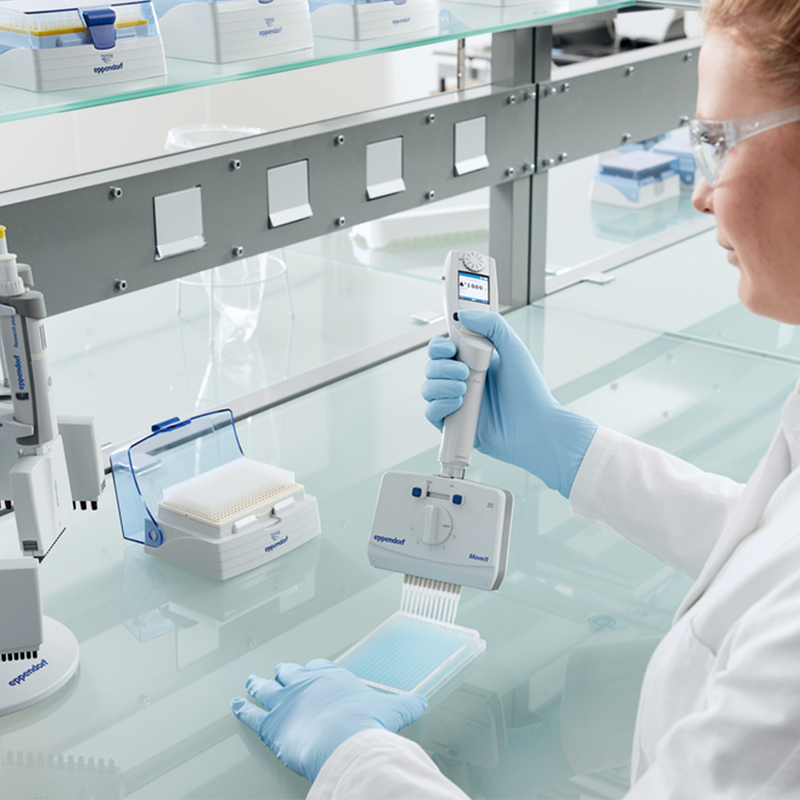 Increasing experimental throughput produces powerful results. However, setting up assays that test numerous samples and replicates can be tedious. As throughput increases, using a single channel pipette for each sample and reagent transfer becomes a burden. Researchers become fatigued as they move the pipette plunger up and down hundreds of times to fill a 96- or 384-well plate, leading to inconsistent liquid transfers and unreliable results. The repetitive motions associated with pipetting can strain and damage the hand, arm, and shoulder.
Increasing experimental throughput produces powerful results. However, setting up assays that test numerous samples and replicates can be tedious. As throughput increases, using a single channel pipette for each sample and reagent transfer becomes a burden. Researchers become fatigued as they move the pipette plunger up and down hundreds of times to fill a 96- or 384-well plate, leading to inconsistent liquid transfers and unreliable results. The repetitive motions associated with pipetting can strain and damage the hand, arm, and shoulder.
Multichannel pipettes provide a solution to this problem. By transferring multiple samples at once, they increase experimental reproducibility and decrease the number of pipetting actions. However, standard multichannel pipettes still have their downsides. For example, the interior of some multichannel pipettes houses tubing connecting the internal mechanism. Over time, this tubing can become fragile and porous, leading to leaks within the pipette.
An even greater pain point comes...
The Eppendorf Move It® adjustable tip spacing pipettes combine the benefits of multichannel pipettes with the  ability to transfer liquids to and from different vessels. With the quick turn of a knob, the spacing between the pipette tips reliably changes to accommodate tip racks, 1.5/2.0 mL tubes, agarose gels, and plates with 12, 24, 48, 96, or 384 wells. The adjustment knob is vibration-free, which ensures that the liquid inside the pipette tips is undisturbed during spacing changes. Users create pre-defined settings for their different vessel formats, which allows them to rapidly transfer liquids between a variety of sources and destinations, saving time and increasing reproducibility.
ability to transfer liquids to and from different vessels. With the quick turn of a knob, the spacing between the pipette tips reliably changes to accommodate tip racks, 1.5/2.0 mL tubes, agarose gels, and plates with 12, 24, 48, 96, or 384 wells. The adjustment knob is vibration-free, which ensures that the liquid inside the pipette tips is undisturbed during spacing changes. Users create pre-defined settings for their different vessel formats, which allows them to rapidly transfer liquids between a variety of sources and destinations, saving time and increasing reproducibility.
Move It pipettes come in 4, 6, 8, and 12 channel manual (Eppendorf Research® plus) and electric (Eppendorf Xplorer® plus) models. Their interior piston-cylinder system directly connects to the tip cone, decreasing the amount of maintenance needed to preserve the integrity of internal tubing. The pipettes have an ergonomic design with a 360o rotatable head, and are optimally balanced to reduce hand fatigue. With these flexible and ergonomic instruments, scientists can perform precise and reproducible high-throughput experiments, such as FACS analysis, cell-based assays, PCR, ELISA, drug screening, and cell culture, while saving time and avoiding injury. 
Interested in reading more?




